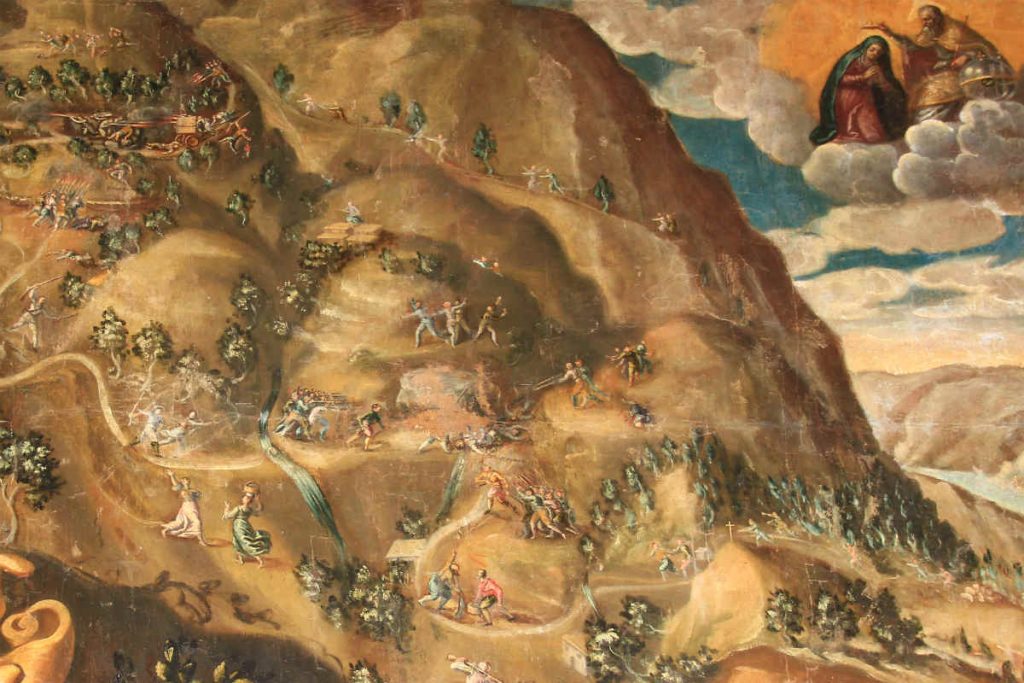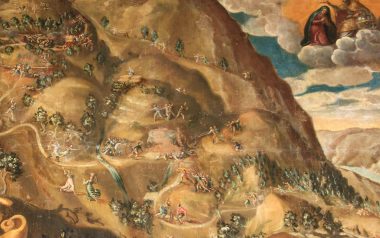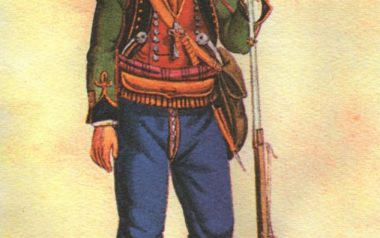Zanzanù the bandit of Lake Garda
Zanzanù – Giovanni Beatrice or Zan Zanon known as Zanzanù, the legendary bandit of Lake Garda (Gargnano April 1576 – Tignale 17 August 1617) who raged for many years in the Magnifica Patria in the first two decades of the seventeenth century.
Zanzanù, the story of a man who became a legend: a ferocious murderer and robber who was guilty of countless crimes for the institutions of the justice of the Serenissima; man of honor for the common population of the High Riviera. The protagonist of many stories handed down from the popular culture of the Riviera di Salò to which deeds and enterprises of all kinds have been attributed, feared by the institutions and the main figures of the city’s politics of his time, softly supported by the population, especially that of the fractions of high Riviera. His figure as a great bandit is anomalous in that he finds himself in this role not by vocation, but rather by a series of situations (his father’s death, Ganassoni murder, etc.) that lead him to be considered such by all; in particular it contributed to this the “whip” created by its enemies (among which elements of the leading families of the area) with the connivance of high offices of public institutions in Brescia and Venice.
Giovanni was the son of Giovanni Maria Beatrice and Anastasia Manin, a family active in Gargnano in commerce and who on several occasions boasted his participation in public positions; married to Caterina who gave him several children. It all began in 1602, on March 24th when, during a parade of the city’s militias (cernide), Zanzanù mortally wounded Francesco Sette, brother of the bandit Giacomo Sette known as il Chierico (he will be killed by the Baruffaldo brothers of Turano in Armo in April 1603, of which one will then be part of the Zanoni band) , grandson of the archpriests of Gargnano Ercoliano Sette and Bernardino Bardelli, son of Riccobon Seven a wealthy landowner of Vigole, district of Montemaderno, enemies of the family, and in the flight is covered by his uncle Giovanni Francesco, who will also be banned and follow the same fate. The death of the Cleric triggers a violent feud between the families of the area that finds a parenthesis only with the peace of August 30, 1603 celebrated between the archpriest Bernardino Bardelli (one of the main supporters of the feud) and some of the main enemies of the Sette family, between where the father of Zanzanù, Gian Maria Beatrice. However, on May 4, 1605, the ex-follower of the Cleric Bernardino Manin and others killed Gian Maria Beatrice under the loggia of the Municipality of Gargnano, thus breaking the stipulated peace; this fact will mark Zanzanù throughout his life and will be his main reason for revenge against his enemies (the Riccobon Sette principals and the archpriest brother-in-law Bernardino Bardelli) and a challenge to the Venetian institutions. Zanzanù’s response and his gang did not wait long, immediately began a series of ambushes to those directly involved and to those close to them, with the following reaction of the Veneto supervisors (Valier, Loredan, Barbarico, Michiel, Badoer) who sought in every way to stop this escalation of violence by looking for vain reinforcements from the Serenissima that sent them bands of cappelletti or courses. Such was now the frequency of Zanoni attacks and the connivance between their enemies and the local Venetian institutions that they were also charged with crimes of which they had no fault, among which the most striking was the murder of the mayor of Salò Bernardino Ganassoni, killed in the cathedral during the celebration of the patron saint of the Riviera San Erculiano on May 29th 1610 by Antonio Bonfadino for revenge as unjustly blamed for robbery by the podestà due to his rivals in business. Zuan Zanone was however linked to this murder and because of this the supervening supervisor of Oltremincio Loredan Mocenigo put in place the demolition of his house in Gargnano; this fact made him decide to openly challenge the Venetian authorities, and he did so in 1611 abducting the Venetian merchant Stefano Protasio, owner of some paper mills, to procure sufficient money for his removal in that of Parma, which he did in early 1612 with a departure that lasted until 1615. His return was greeted by a good part of the population, but times had changed, a wind of war was blowing between the Serenissima and the Archduchy of Austria and the local Venetian authorities were intent on preparing the population for a possible invasion and, having come to knowing of his return, they took drastic measures to create the void around him by severely hitting anyone who offered support; moreover the band also bothered important merchants of Desenzano and Salò for their licit and illicit trades, so they also took an interest in sending hitmen to eliminate them, so much so that Eliseo Baruffaldo and Giovan Pietro Pellizzaro fell under their ambushes. At that time the Serenissima gave the possibility to many affected by notice of joining their army in exchange for freedom, so Zuan Zanone saw in this a good opportunity to end his career as a bandit and then applied to the various Municipalities and to the Director Michiel to intercede in his favor with the Council of Ten in Venice, the response was positive from all the parties involved, but not from Venice; to the refusal he reacted by starting his reprisals against the notables of Gargnano but the administrator Michiel was directly concerned to contact all the leaders of the countries of the high Riviera by putting strong pressure to do their duty and threatening severe penalties for those who abstained; with these prerogatives he was faced a few months later and with the advent of the administrator Giustiniano Badoer, Zanzanù and his band, an operation that lasted from dawn to dusk of 17 August 1617, when his gang was defeated and he was killed later a long chase up to the Monible valley above Tignale. Thus ended the life of a bandit who for more than a decade had managed to evade Venetian justice in open collaboration with a good part of the local nobility, living in the bush in the mountains of the Upper Riviera; the ex-voto painting commissioned by the notables of Tignale to the painter Giovanni Andrea Bertanza (Padenghe 1570 – Salò 1630) who made it in 1618 also contributed to remembering and “mythicizing” his figure.

The historical reinterpretation of the entire story of Giovanni Beatrice by Claudio Povolo in his “Zanzanù, the bandit of the lake”, highlights an “alternative” reality to that officially described by the institutions of the time, which highlights a situation of family feuds and intrigues for power and economic supremacy (also linked to the important smuggling phenomenon) which include murder and slander as usual means of eliminating enemies, which makes one look at that widespread banditry phenomenon with other eyes on the lake in the XVI and XVII centuries, especially with the beginning of the decline of the Serenissima.


